Folk paintings are forms of creativity, which are passed on by masters to the next generations and reflect the cultural heritage and traditions of a certain area or ethnic group.
They have a long history, which is connected with the development of crafts and trade. All their types in ancient times were connected with the daily life of people, their needs and customs.
Folk paintings were used to decorate houses, household items and clothing. Paintings were popular among all strata of the population, from peasants to the nobility. Nowadays, they continue to develop and adapt to modern conditions. They are used in interior design, fashion and other areas.
Varieties in Russia
The history of artistic painting in Russia goes back to the distant 7th-6th centuries, when the first examples of folk sculpture appeared in the Slavic territories, which were clay and bronze products decorated with elegant patterns.
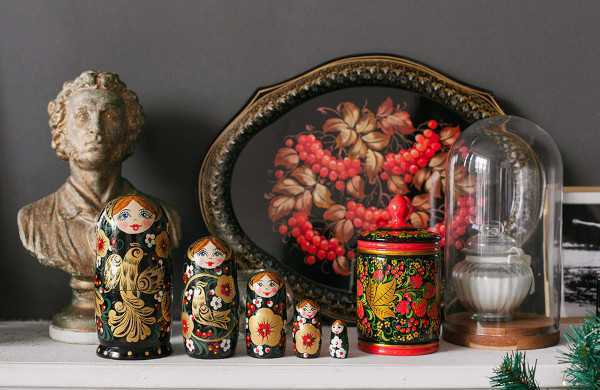
The development of national art over the centuries was inextricably linked with the painted craft. It was particularly developed due to the diversity of natural materials, cultural heritage and traditions.
In the 21st century, there are almost 20 types of graphic folk paintings and more than 30 types of pictorial ones in the country. Features include a variety of techniques, materials and subjects. They reflect the richness of Russian culture, its history and geographical location.
Boretskaya painting
It originated in the 18th century in the area of the village of Borok (hence the name).
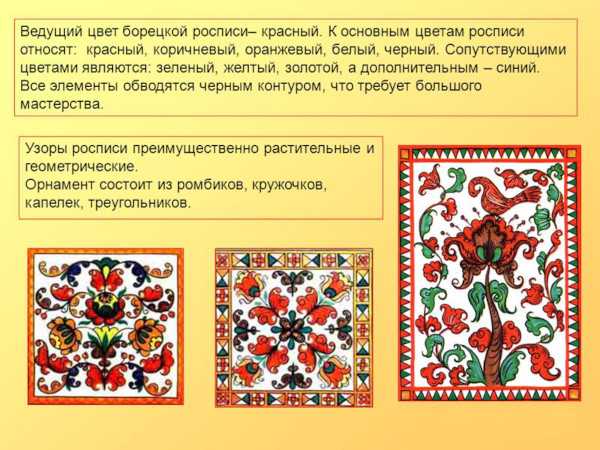
It is characterized by the following features:
| Elements | Brief description |
| Color scheme | Bright and saturated colors are used, such as:
|
| Ornament | Includes:
|
| Elements | The main ones are:
They are outlined with a black contour. They are often combined with each other, creating complex and interesting compositions. |
| Motives and plots | Often found associated with nature and peasant life. |
| Symbols | The Tree of Life is used, which has meaning. It is depicted as a very large flower with a straight stem. |
Vologda
This is a folk craft that originated in the Vologda region in 1976. It is a type of Khokhloma painting, but with its own distinctive features. It differs from it in the use of silver as a background, as well as in the color scheme: blue and black are used instead of red.

The patterns resemble plant motifs, which are typical for Khokhloma products. The peculiarity of Vologda painting is that it is done on wooden products, which are then covered with a layer of varnish and fired. The result is a beautiful and durable surface that retains the brightness and saturation of colors.
Volkhovskaya
Folk paintings, the types of which include Volkhov, are often characterized by bright and saturated colors, clear contours and expressive elements. This trend originated in the Volkhov district settlements of Lake Ladoga. It is generally accepted that it was formed in the first half of the 19th century. For painting.

Volkhov rose is one of the main motifs. It is a stylized flower with rounded petals and a core. It can be made in different colors and sizes. The Volkhov painting technique is a gradient stroke, in which one color smoothly transitions to another. This creates the effect of volume and depth.
Gradient strokes can be done in one direction or in different directions.
The most famous at present are 2 types of Volkhov spinning wheels, which are decorated with this painting:
- gilded ones, which have a golden background;
- painted eggs with a colored background.
Vyatka
It appeared on the territory of the modern Kirov region (Vyatka province).

Primary colors:
- red;
- yellow;
- orange;
- green;
- black.
The painting uses plant motifs such as:
- flowers;
- leaves;
- berries;
- branches.
You can also see images of birds and animals. Vyatka painting was done not with brushes, but with hare paws. With its help, they applied strokes that gave the drawing a special texture and volume.
Various symbols are used in Vyatka painting:
| Symbol | Meaning |
| Circle | symbol of the sun |
| Rounded strokes | rays and solar energy |
| Several circles | the movement of the sun across the sky |
| Rhombus | fertility and prosperity |
| Lion and birds | defenders of the house |
| Birds | intermediaries between people and higher powers |
In Vyatka painting, the principle of symmetry and balance of composition is often used.
Gayutinskaya
It got its name from the village of Gayutino, located on the bank of the Ustya River in the Vologda Region. It is made on wooden items using bright and saturated colors.
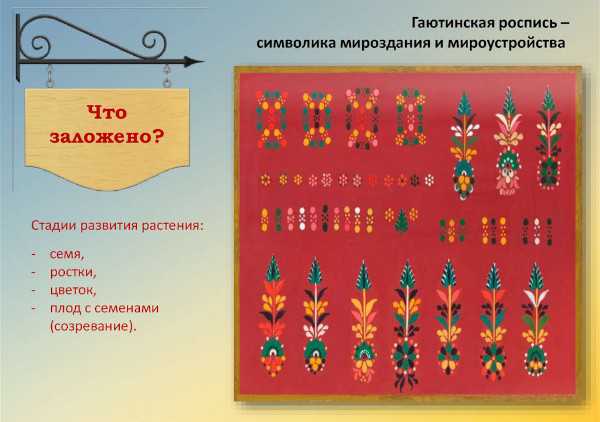
Features of Gayutin painting:
| Elements | Brief description |
| Background | They did it on a thick cherry, red-brown or ochre background. This gave it a special depth and richness. |
| Pattern | The pattern is a small beaded pattern of floral rosettes, formed from dots and petals. It created an impression of lightness and airiness. |
| Main symbol | The world tree, which symbolizes 3 times: the past (seeds and shoots), the present (flower and stem) and the future (fruit). |
Gzhel
It appeared in Russia in the 17th century in the village of Gzhel, located in the Moscow region. The main feature is a bright and pure blue color, which is combined with white.
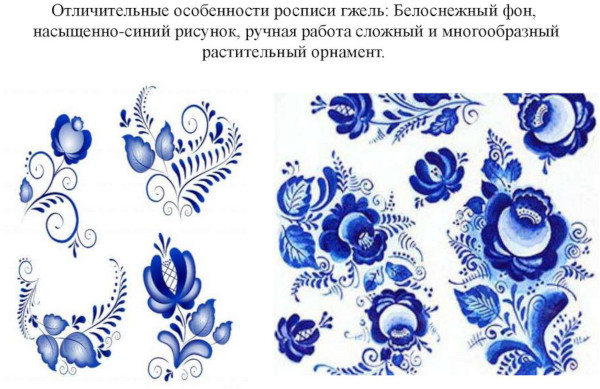
Ornaments and motifs: floral motifs, birds and landscapes. Images of roses can often be seen on Gzhel ceramics. In addition, images of birds symbolizing peace and love are often found on Gzhel ceramics. The painting often depicts scenes from Russian fairy tales.
Glubokovskaya
Folk paintings, the types of which include Glubokovskaya, are not always studied. The name of this trend comes from the village of Glubokovo in the Vologda region (now it is the Velsky district of the Arkhangelsk region).
The main colors of the painting are:
- red;
- brown;
- orange;
- blue;
- ocher.
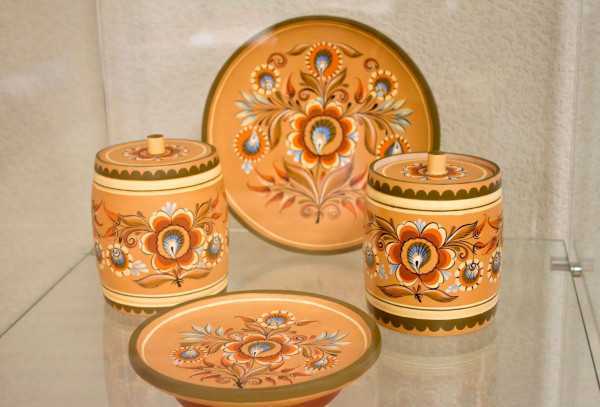
Drawings include:
- buds;
- flowers;
- leaves;
- twigs.
They can be made in a realistic or stylized form. They are located separately or combined into compositions.
Elements include:
- drops;
- curls;
- brackets and other figures.
The painting symbols can be done on a rich orange and red-brown background. They are placed vertically, horizontally or diagonally.
Gorodetskaya
It originated at the end of the 19th century in the city of Gorodets in the Nizhny Novgorod region, located on the Volga River. The painting is characterized by the use of bright and saturated colors. It was done with plant paints from cranberries and blueberries.
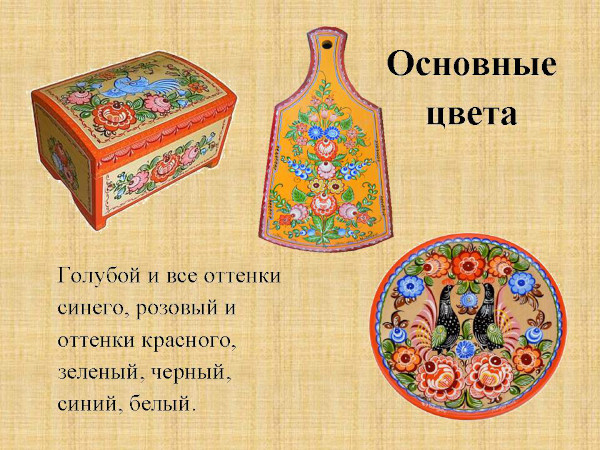
The subjects depict scenes from rural life, rituals and peasant feasting customs. Horse riding is also often depicted, which is a distinctive feature of this style of painting.
Guslitskaya painting
It appeared at the end of the 17th century in the Old Believer settlements of Guslitsy, located in the territory of modern Moscow and Ryazan regions.

It is characterized by the use of bright and saturated colors, such as:
- blue;
- blue;
- pink;
- turquoise.
In Guslitskaya painting, the following elements with abundant gilding can be distinguished:
- plant motifs: flowers, leaves, vines;
- geometric patterns: circles, triangles, squares;
- abstract forms: curls, spirals, waves.
Images of birds are common. Religious motifs associated with the Old Believer faith are also often used, as this painting was originally used to decorate church books.
Zhostovo
It was formed in the early 19th century in the village of Zhostovo, located in the Moscow region. Its features are bright and contrasting colors, rich ornaments and filled spaces. It was used on metal trays.

The main colors on a black background used in painting:
- red;
- yellow;
- green;
- blue.
The bright bouquets are complex and detailed, which gives the painting expressiveness and originality. Elements, motifs and plots in Zhostovo painting are often associated with nature. The most frequently used motifs are wild and garden flowers.
Kostroma
Originated in the Kostroma region. Kostroma painting is characterized by bright, saturated colors, clear lines and laconic patterns. The colors can be any, but they always match each other.
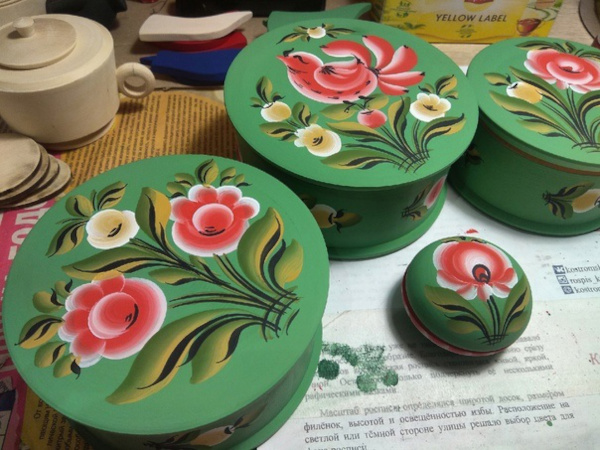
The painting includes various elements, such as twigs and flowers. They can be combined into simple patterns, creating a unique style. They are sometimes done in a stylized form and complemented by geometric elements.
Lipetsk
Folk paintings, the types of which sometimes resemble Khokhloma, include the Lipetsk trend. It appeared in the Lipetsk region at the end of the 18th century.
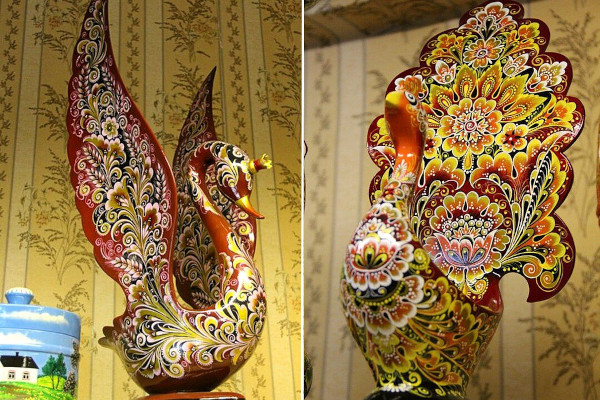
Features include:
- bright colors;
- simple and laconic forms;
- plant motifs.
Emerald, purple and azure colours predominate in Lipetsk painting. Ornaments and elements include floral compositions as well as geometric patterns.
Mstera
Developed in the Mstera region. Usually dates back to the 14th century. The plots include fairy tales and folk motifs. Each ornament has its own symbolic meaning.

The Mstera painting technique has its own characteristics, including the application of several layers of paint and the use of special tools to create relief patterns.
Obvinskaya
Originated on the Obva River in the 19th century, it is characterized by bright colors, complex ornaments, and motifs related to nature. The elements form complex compositions that may include images of plants.
The basis is the Obvinskaya rose - a flower with 8 petals.

The color range includes bright and saturated colors:
- green;
- blue;
- bright blue;
- red;
- orange;
- white;
- almost black.
Onega
Originated in the 19th century in villages located on the shores of Lake Onega. This type of painting is distinguished by its lack of symmetry.
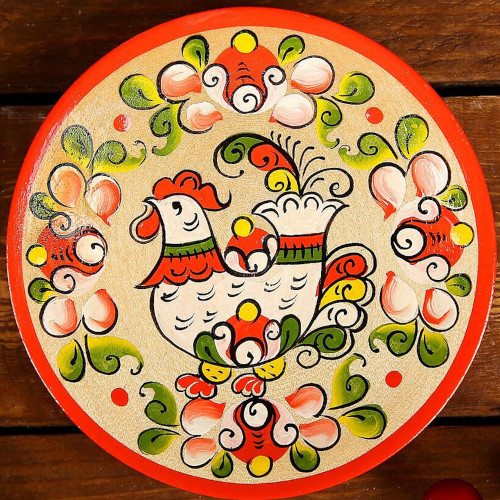
Traditionally, white and red colors are used. The background is both light and dark. Nature motifs such as flowers and apples are often found.
Palashchelskaya (Mezenskaya)
It appeared in the village of Palashcha in the Mezensky District of the Arkhangelsk Region. It became popular in the 19th century. In their work, artists mainly use rich shades, such as red and black.
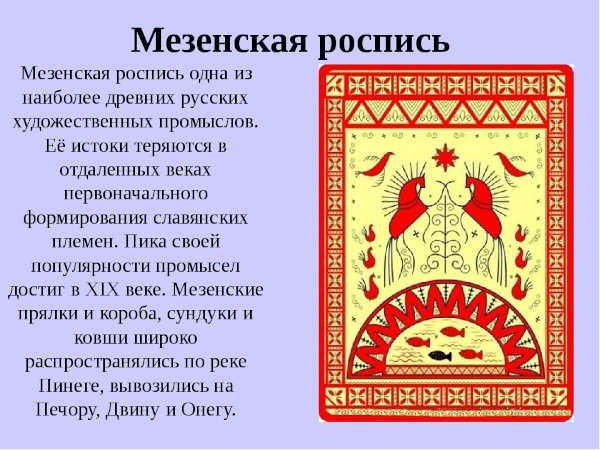
The elements of the plot of the Palashchel painting are closely connected with nature and symbolism. You can also find motifs of the animal world with images of horses and deer.
Palekh
It originated in 1920 in the village of Palekh, located in the Ivanovo region. Artists create incredibly detailed and bright images on a black background, using mineral and vegetable dyes based on egg yolks.
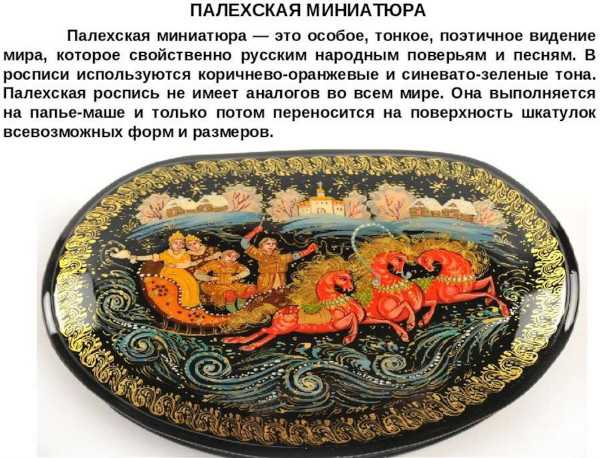
Frequently used colors include:
- gold;
- red;
- yellow;
- green.
Gold lines are used to frame the image and give it a noble look. The images are complemented by decorative elements.
The most popular are fairy tale and legendary characters such as:
- Ivan Tsarevich;
- Firebird;
- Vasilisa the Wise;
- Baba Yaga.
Palekh artists also depict historical events, folk rituals and everyday scenes.
Permogorskaya
It was formed in the 18th century in the Arkhangelsk region, in the area of the Northern Dvina River. Features include the use of bright and saturated colors on a light background, such as red, yellow, green to create contrast and highlight important details.
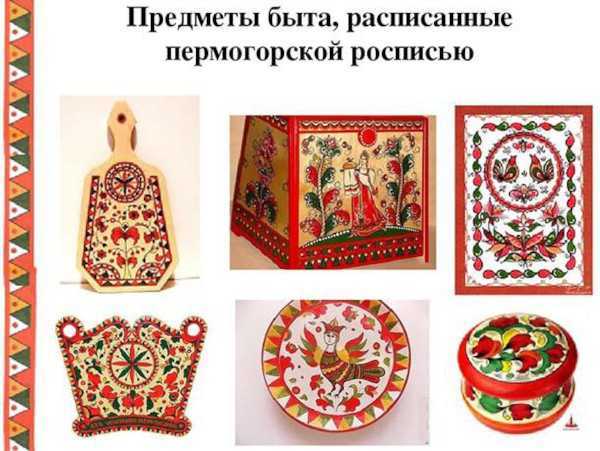
Ornaments and elements can be plant-based. Typical images are flowers, berries and leaves. Among the main motifs and plots, one can single out the image of the Sirin bird. Scenes from peasant life are drawn. These motifs and plots are combined into complex compositions.
Petersburg
Folk paintings, the types of which may not gain popularity outside the territory, include the St. Petersburg trend. It originated in St. Petersburg at the end of the 19th century.
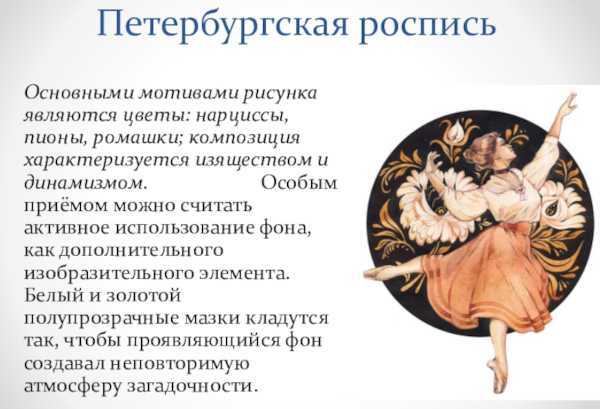
Features of St. Petersburg painting:
- bright and saturated colors;
- use of gold and silver shades;
- the presence of clear and distinct contours;
- the use of a variety of motifs.
The color scheme includes green, yellow. Gold and silver shades are used to create the effect of luxury and wealth. Plant motifs (daffodils, peonies, daisies) symbolize life and nature.
Geometric patterns represent order and harmony. Images of birds, animals and people indicate a connection with the surrounding world. Themes often include urban landscapes, historical events and mythological themes.
Pizhemskaya
They appeared in the Arkhangelsk region on the Pizhma River. Its roots go back to the Old Believers in the 17th century. It is characterized by a strict geometric structure of the ornament, graphic quality and emphasized decorativeness. The color scheme includes red, green, yellow.

The ornaments are made in black, and the background can be of different shades.
The main elements are:
- diamonds;
- zigzags;
- circles;
- spirals;
- rosettes and other geometric shapes.
Polkhov-Maidanskaya
The origins of the painting were found in the village of Polkhov-Maidan in the Nizhny Novgorod region. The history is more than 100 years old. The peculiarity is the original ornaments. Mainly red and black shades are used. Polkhov-Maidan painting was initially created on wooden household items and houses using a wood burner.
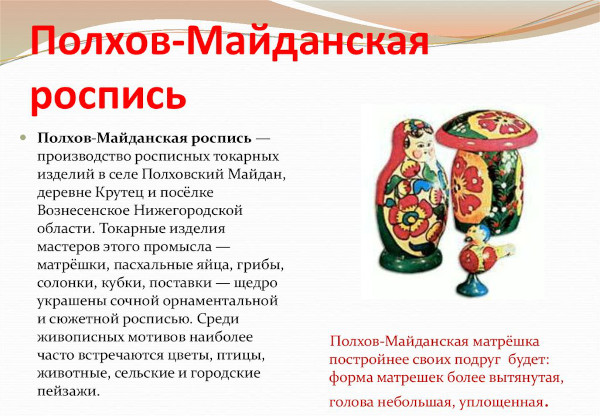
Ornaments are most often represented in the form of plant elements, such as flowers:
- rose;
- poppy;
- chamomile;
- tulip;
- rose hip.
The legend of Alena Arzamasskaya is connected with the appearance of this painting. She was one of the active participants in the peasant war of 1670-1671 led by Stepan Razin. She was a nun from the Trans-Volga Amazon detachment, formed mainly from fugitives and serfs in the Nizhny Novgorod lands.
Alyona's fate was tragic: the rebellious nun was captured by government troops. After interrogation, she was suspected of witchcraft and sentenced to a cruel execution - burning at the stake. A rose bush grew at the place of Alyona's execution, which remained untouched for a long time. Local residents considered this place holy.
Prikamskaya
It originated in the Perm region in the 18th century.
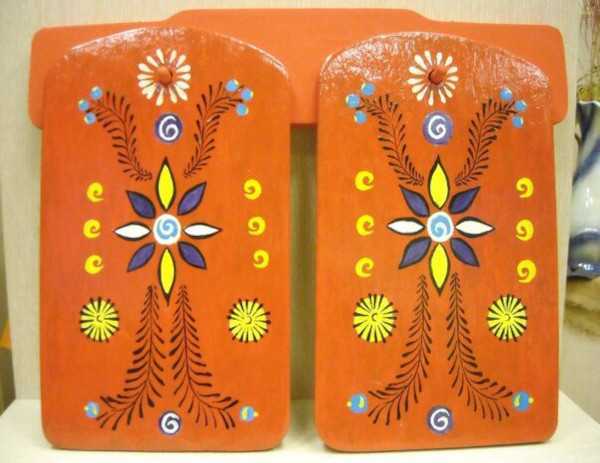
It is characterized by the use of bright and saturated colors, such as:
- red;
- blue;
- green;
- yellow;
- orange;
- brown.
The ornaments and painting elements on the bright orange background are complex and varied.
You can see images in them:
- berries;
- flowers;
- birds;
- animals;
- geometric figures;
- lines.
Puchuzhskaya
Folk paintings, the types of which are almost always named by location, include the Puchuzhskaya. It appeared in the settlements of Puchezh, located in the Arkhangelsk region, at the end of the 19th century.
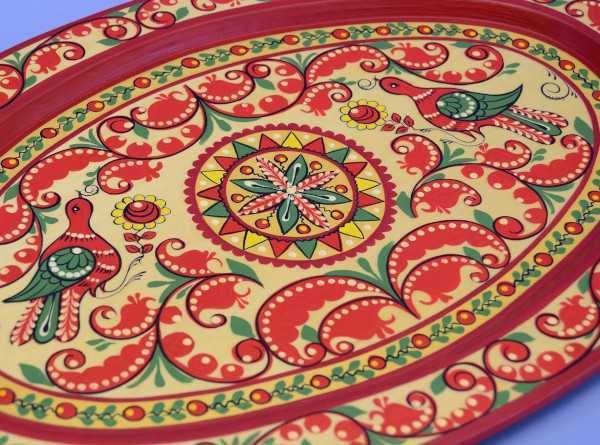
The main colors present in the painting are:
- red;
- black;
- bright green;
- white.
The most common patterns include:
- geometric figures;
- floral motifs;
- leaves;
- branches;
- patterns in the form of various lines and circles.
The main motives are related to:
- nature;
- landscapes;
- animals;
- flowers.
Rakul painting
It was formed in the 19th century in the village of Ulyanovskaya, Krasnoborsky District, Arkhangelsk Region. It was initially used for liturgical books by Old Believers.
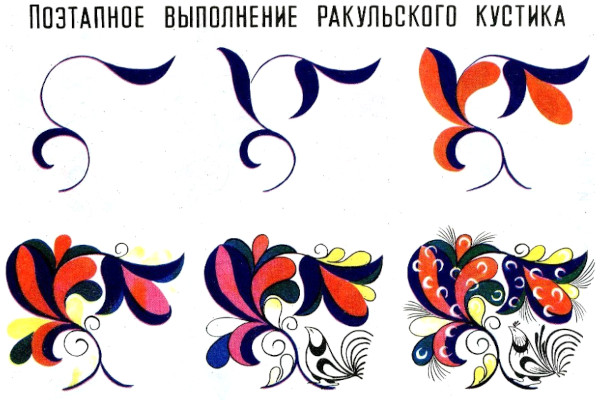
The color range includes:
- black;
- golden ocher;
- green;
- brown-red.
Ornaments are used that consist of geometric figures such as:
- diamonds;
- triangles;
- squares;
- circles.
These figures can be combined into complex compositions, creating a unique pattern.
Rostov enamel
It appeared in Rostov Veliky, Yaroslavl Region, in the 18th century. It is enamel painting with cold and hot enamel paints on a metal base. The metal base is covered with enamel and a drawing is applied, after which it is kept in an oven at a certain temperature.
Copper plates are usually used, which after firing acquire a characteristic snow-white color.
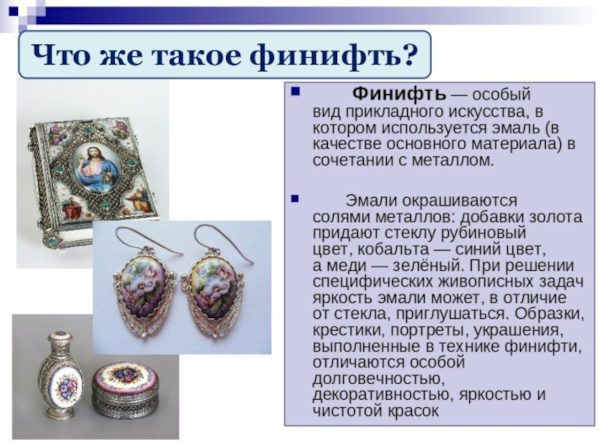
Presented by images:
- landscapes;
- architectural structures;
- religious subjects.
- everyday scenes;
- historical miniatures.
Traditionally, the craftsmen finish the finished work with a gold lining, which emphasizes the beauty of the color scheme. All elements are made with special attention to detail and fine workmanship.
Often in the works you can see:
- plant ornaments;
- birds;
- animals;
- people in national costumes.
Semikarakorskaya
In 1972, in the city of Semikarakorsk in the Rostov region, it was decided to produce white faience products with painting. Its features are original shapes and hand-painted underglaze painting.
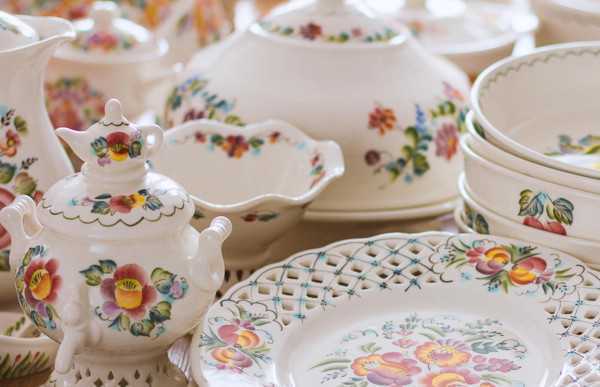
There are several main styles:
- Landscape painting with Don motifs — is a trend that reflects the beauty of the nature of the Rostov region, especially the Don. Rivers, cities, fields and other natural objects are depicted on ceramic products.
- Decorative brush painting is a stylized floral composition with an emphasis on the central flower. The painting is done in a traditional or simplified style (small size of the composition).
- Minor plastic surgery — small figures decorated with underglaze and salt painting. Often such items depict scenes from everyday life). Blue and light blue colors are used.
- Salt painting used to create complex compositions and landscapes. When fired, an unexpected color effect is achieved, and the contours acquire a special softness.
Tagilskaya
Folk painting of metal trays, which originated in Nizhny Tagil in 1746. Special mineral paints are used to create this type of artistic design.
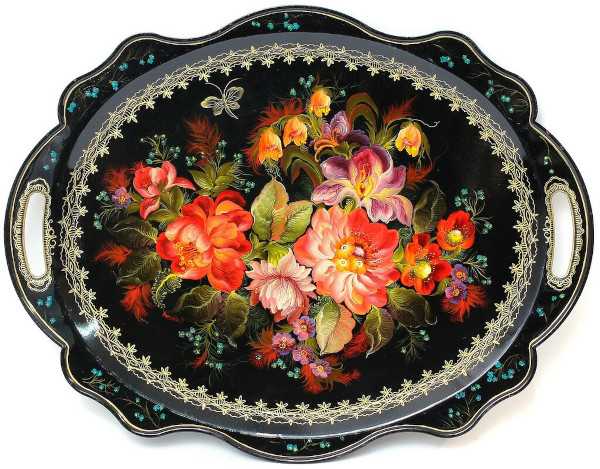
Ornaments and elements include:
- floral motifs;
- birds;
- animals;
- scenes from city life.
- berries;
- flowers,
- leaves and other elements of nature.
Subjects: from everyday scenes to fairy-tale and mythological characters. They are often connected with the life and everyday life of the Ural workers and peasants.
Ural-Siberian
This is a type of free brush painting that originated in the 17th-18th centuries among the Old Believers of the Urals and Siberia. A special technique is used - each stroke is applied twice. First, a broad brush is used to draw a rough outline, and then, with a small brush and with slight pressure, the clarifying lines are drawn.
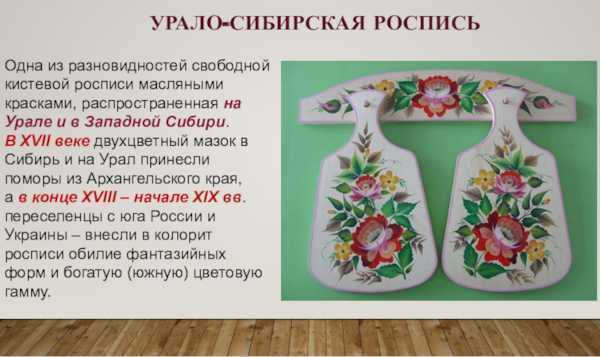
The painting is characterized by the absence of clear contours. Even in the case of working with a specific ornament or composition, the master can add new unexpected elements. The work uses bright colors that create a festive mood. The masters immediately paint with oil paints on a clean sheet.
Among the painting motifs, plant ornaments predominate:
- berries;
- leaves;
- branches;
- flowers;
- herbs.
Masters often depict:
- figures of people;
- genre scenes from peasant life;
- war scenes;
- festive festivities.
Fedoskinskaya
This type of miniature painting on lacquerware appeared in 1795 in the village of Fedoskino in the Moscow region. Classical subjects, landscapes and still lifes are used in its creation.
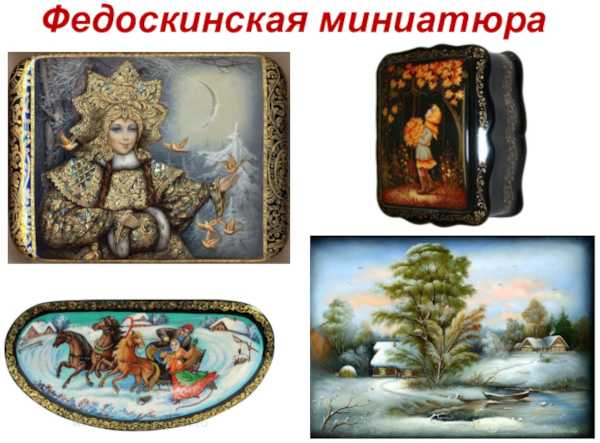
The painting is done with oil paints in 3-4 layers:
- underpainting;
- registration;
- glazing (application of translucent paints to deepen the color).
Also, products are often decorated with gold leaf or gold leaf.
To create the base, they use papier-mâché – sheets of cardboard pressed into several layers, treated with primer and a special composition of soot and linseed oil.
Khokhloma
Originating in the 17th century in the Nizhny Novgorod region (the city of Semyonov), Khokhloma is a bright, colorful art of painting wooden dishes and furniture.
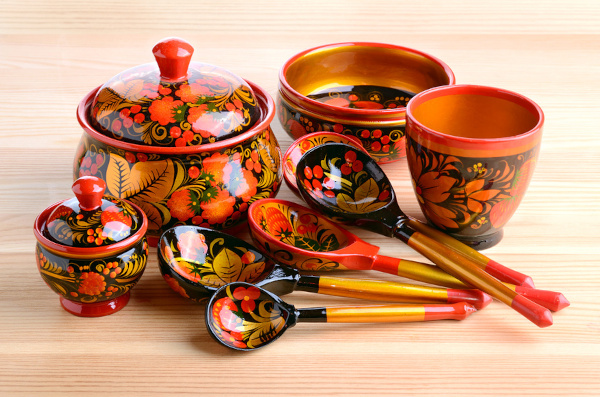
Primary colors:
- red;
- yellow;
- orange;
- green;
- gold;
- blue.
Ornaments and designs can be simple and straightforward, or quite complex. The main motif is a plant pattern based on a climbing branch with bunches of berries, such as raspberries, strawberries or rowan berries. Images of birds, fish and fantastic creatures are also used.
The gold color is used not only for the design of the pattern, but also as a background shade. For this, the surface is first coated with tin (tinning), on which the pattern is then applied. After this, the object is varnished and hardened in the oven, due to which a honey-golden shade appears.
Sheksninskaya gilded woman
It is widespread in the Vologda region, in particular, in the Sheksninsky district. Traditionally used to decorate kitchen utensils and spinning wheels. The pattern is based on a golden-yellow color, which is formed using a very thin metal coating. The background can be blue, green or red.

Main motifs and patterns:
- Tree of life;
- architectural elements;
- birds;
- geometric figures;
- flower arrangements.
One of the principles of the style is to avoid straight lines and create the effect of a brush moving along a carelessly outlined contour. The painting is complemented by an original engraving of the background, which makes the ornament even more voluminous and expressive.
Folk paintings are part of the cultural heritage of Russia. They reflect the history, traditions and values of the people. Their varieties continue to develop in our time, preserving their uniqueness and beauty.
Video about folk paintings
Styles of Russian folk painting:
